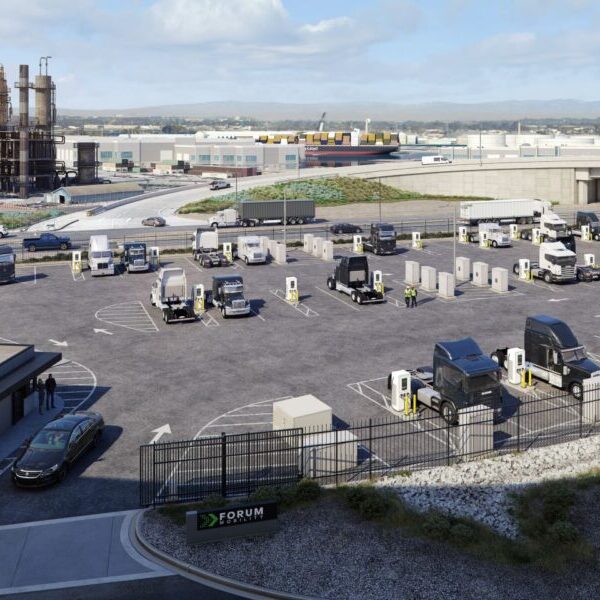Loading freight? Well forget the warehouses, skip the holding areas and wave goodbye to the sorting hubs. There’s a new sheriff in town slashing wait times and it goes by the name… Direct loading.
Direct freight loading cuts out all the middlemen. Containers, trailers or railcars park right up alongside the factory, opening their doors wide to receive goods warm off the production line. Out come the forklifts, whisking pallets away in a rapid choreography of logistics. These drivers mean business, stacking products high with Tetris-like precision. The aim of the game? Utilize every inch of transport capacity in one seamless flow.
At some distribution centers, it’s a non-stop loading frenzy. Custom conveyor belts feed packed goods straight from the end of the assembly line into awaiting trucks. Configurable docks raise and lower to vehicle height allowing swift forklift transfers. Direct loads in motion – hypnotizing to watch and a productivity driver’s dream.
With the elimination of interim storage depots, each product faces far less handling. Minimal touches mean lower risks of knocks, drops and contamination while in transit. For perishables and high value freight, that’s cargo insurance money can’t buy. Arriving in pristine condition, direct loading unloading enhances customer satisfaction on delivery day.
Of course, bypassing the middlemen also avoids idle time parked in warehouses and loading bays. The clock starts when production finishes, not when the freight hub has availability. While traditional loads play the waiting game, direct freight shipping methods stick to schedule. Best of all, cost savings don’t come at the expense of speed or safety.
When it comes to loading methods, say bye to the old-fashioned way. Savvy distributors are switching to Direct loading techniques for unbeatable efficiency. Want your freight faster, safer and cheaper? It’s time to cut out the middlemen. Go direct or go home!
Let’s discuss this in detail. Keep reading!
Also Read, 3 Key Things You Must Know About Container Shipments
All Aboard: Streamlined Shipping With Direct Loading Techniques
1. Bye Bye Storage Silos: Optimizing express direct loads logistics
Before products reach customers, traditional shipping methods general route them through various delivery locations. From factory warehouse to distribution center to transport hub, interim storage and handling is the norm. Before final loading, freight transportation methods are shuffled repeatedly over days or weeks.
Direct loading techniques are reshaping the status quo for radically streamlined logistics. The idea is simple. Eliminate pit stops by loading cargo loading best practices straight from finish line to trailer without storage breaks. This express lane approach provides tangible benefits beyond saving time.
2. Positioning Transport Units Just-In-Time
The direct loading techniques are positioning empty conveyances alongside product assembly lines. As soon as goods roll off production, containers, trailers, or boxcars can be loaded. No idle time sitting in warehouse inventory before shipment.
Doors swing open as pallets and packages transfer rapidly to awaiting vehicles. Forklift operators arrange freight for optimal weight distribution and transport utilization. It’s a seamless sequence from manufacturing to shipping methods general in one constant flow.
3. Custom Loading Infrastructure
To enable ultra-efficient loading, some facilities invest in purpose-built infrastructure. Buildings are connected to transportation units by:
- Conveyor belts
- Adjustable docks
- And streamlined pathways.
This erases the divide between warehouses and loading zones. Products move fluidly from finishing line to final mile transport with no bumps or bottlenecks.
Also Read, Benefits And Tips – Trade Automation Services For Your Logistics Business
4. Advantages Beyond the Loading Dock
Direct loading techniques optimization raise the bar beyond saving hours or labor. The method also unlocks qualitative advantages for supply chain resilience.
With fewer touches, freight faces lower risks of damage like dents, drops or contamination during handling. For fragile items, minimized handling prevents costly spoilage from cracks or leaks.
Additionally, direct loading enables precise shipment scheduling aligned with real-time production outputs. This predictability provides peace of mind for time-sensitive clients relying on reliable delivery windows.
4. The Road Ahead: Future Potential
As supply chain agility becomes increasingly crucial, direct loading principles pave the path ahead. The essence of moving cargo loading best practices faster while eliminating waste will only gain traction.
Expect innovations like a modular loading infrastructure and high-density storage containers. These will help further optimize rapid workflows. Autonomous freight handling may also reduce on-site labor needs.
When freight volumes continue to rise, efficiency tools like direct transport loading become pivotal. By retaining flexibility while maximizing velocity, the method forms a template for next-gen logistics.
Also Read, The Beginner’s Guide to Freight Forwarding
Step Into The Shipping Fast Lane With Lading Logistics
In the high-speed world of logistics, yesterday’s freight strategies struggle to keep pace. Extended storage stops and excessive handling now equate to time and money squandered.
Cut out the pit stops and say hello to shipping’s exciting new express lane – direct loading techniques. Transfer cargo swiftly from the manufacturing line straight into awaiting transport with no idle time baked in. It’s the lean and green option customers increasingly demand.
Ready to maximize shipping velocity for resilient supply chains?
The logistics gurus at Lading Logistics have many years of steering brands into the logistics fast lane. Lading Logistics navigates the emerging landscape of freight with custom optimization solutions.
You can enjoy cutting-edge shipping methods that enhance speed, efficiency, and sustainability today! Just Contact us!
FAQs:
What is direct freight loading, and how does it differ from traditional shipping methods?
Direct freight loading is a logistics strategy that involves loading cargo directly onto transport units, such as containers, trailers, or boxcars, without the need for interim storage. Unlike traditional methods with multiple handling points, direct loading minimizes pit stops, saving time and reducing the risk of damage.
What are the key advantages of direct loading techniques in freight logistics?
Direct loading offers several advantages, including reduced handling, a lower risk of damage, and minimized idle time. By positioning transport units just-in-time and utilizing custom loading infrastructure, it streamlines the process from the finishing line to the final mile, enhancing supply chain resilience.
How does direct loading contribute to cost savings and efficiency in freight shipping?
Direct loading eliminates the need for warehouses and loading bays, reducing idle time and associated costs. By streamlining the loading process and minimizing handling, it enhances efficiency, ensuring that the clock starts ticking when production finishes, not when the freight hub has availability.
What role does custom loading infrastructure play in optimizing direct loading techniques?
Custom loading infrastructure, including conveyor belts, adjustable docks, and streamlined pathways, facilitates ultra-efficient loading. These purpose-built structures connect buildings to transportation units seamlessly, erasing the divide between warehouses and loading zones, and enabling a constant flow from manufacturing to shipping.
How does direct loading contribute to supply chain resilience and future logistics trends?
Direct loading minimizes touching and handling, reducing the risks of damage and contamination during transit. This contributes to supply chain resilience by providing predictability in shipment scheduling aligned with real-time production outputs. As logistics trends evolve, direct loading principles are expected to pave the way for innovations in modular infrastructure and autonomous freight handling.



